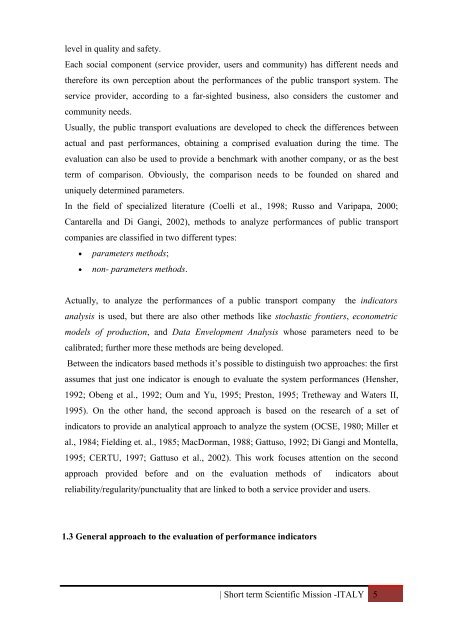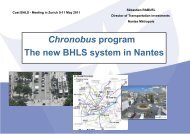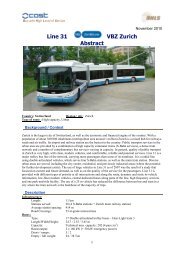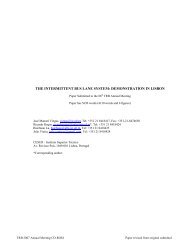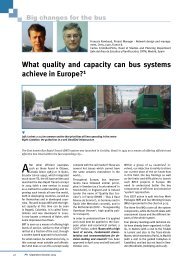RESEARCH APPROACH ABOUT RELIABILITY OF ... - BHLS - HOME
RESEARCH APPROACH ABOUT RELIABILITY OF ... - BHLS - HOME
RESEARCH APPROACH ABOUT RELIABILITY OF ... - BHLS - HOME
Create successful ePaper yourself
Turn your PDF publications into a flip-book with our unique Google optimized e-Paper software.
level in quality and safety.<br />
Each social component (service provider, users and community) has different needs and<br />
therefore its own perception about the performances of the public transport system. The<br />
service provider, according to a far-sighted business, also considers the customer and<br />
community needs.<br />
Usually, the public transport evaluations are developed to check the differences between<br />
actual and past performances, obtaining a comprised evaluation during the time. The<br />
evaluation can also be used to provide a benchmark with another company, or as the best<br />
term of comparison. Obviously, the comparison needs to be founded on shared and<br />
uniquely determined parameters.<br />
In the field of specialized literature (Coelli et al., 1998; Russo and Varipapa, 2000;<br />
Cantarella and Di Gangi, 2002), methods to analyze performances of public transport<br />
companies are classified in two different types:<br />
• parameters methods;<br />
• non- parameters methods.<br />
Actually, to analyze the performances of a public transport company the indicators<br />
analysis is used, but there are also other methods like stochastic frontiers, econometric<br />
models of production, and Data Envelopment Analysis whose parameters need to be<br />
calibrated; further more these methods are being developed.<br />
Between the indicators based methods it’s possible to distinguish two approaches: the first<br />
assumes that just one indicator is enough to evaluate the system performances (Hensher,<br />
1992; Obeng et al., 1992; Oum and Yu, 1995; Preston, 1995; Tretheway and Waters II,<br />
1995). On the other hand, the second approach is based on the research of a set of<br />
indicators to provide an analytical approach to analyze the system (OCSE, 1980; Miller et<br />
al., 1984; Fielding et. al., 1985; MacDorman, 1988; Gattuso, 1992; Di Gangi and Montella,<br />
1995; CERTU, 1997; Gattuso et al., 2002). This work focuses attention on the second<br />
approach provided before and on the evaluation methods of indicators about<br />
reliability/regularity/punctuality that are linked to both a service provider and users.<br />
1.3 General approach to the evaluation of performance indicators<br />
| Short term Scientific Mission -ITALY 5


